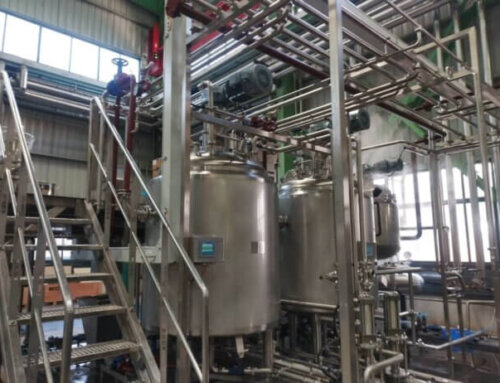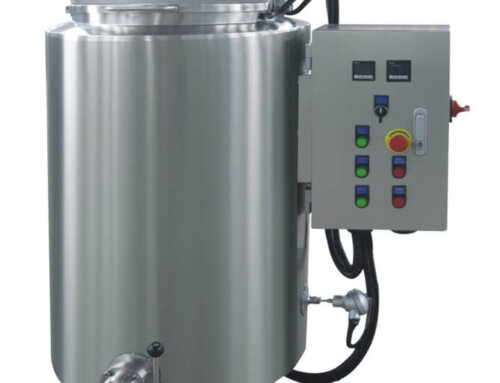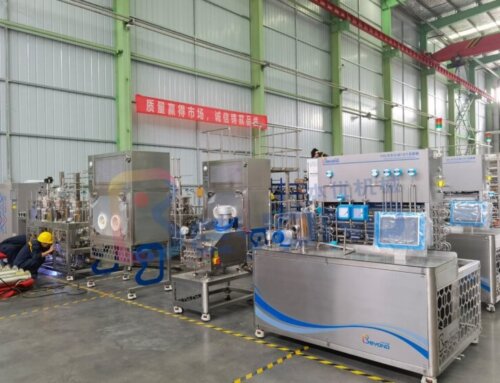Adsorption is a process in which an adsorbent (activated carbon) is used to selectively adsorb a component in a liquid or gas, so that it is enriched on the adsorption surface, and the adsorbed substance is the adsorbate. Adsorption separation includes four steps: passing the adsorbed liquid into the adsorbent, then the adsorbate is adsorbed to the surface of the adsorbent, and the third step is feeding liquid flows out; the fourth step is that the adsorbate is desorbed and recovered, the adsorbent is regenerated.
The ion exchange method is to use the synthetic ion exchange resin as the adsorbent to adsorb the substance in the solution on the resin by Coulomb force, and then use a suitable eluent to elute the adsorbed substance from the resin to achieve separation, concentration and purification.
With the development of adsorption and ion exchange technology, it has been widely used in the debitterization, deacidification and purification of fruit juice in the juice production process.
Application Of Adsorption And Ion Exchange In Debittering Of Citrus Juice
Adsorption and ion exchange is widely used in citrus debittering. Citrus bitter substances are mainly composed of limonin and flavonoid glycosides. In the production process of citrus juice, ultrafiltration and adsorption technology are combined to remove bitter substances in citrus juice. The pasteurized citrus juice is first ultrafiltered and concentrated by 5-10 times to separate the pulp, and the ultrafiltration permeate containing sugar and bitterness enters the resin column. The debittered juice flowing out of the adsorption resin bed is then mixed with citrus pulp (ultrafiltration retentate) to obtain the product. The adsorbent resin can choose the divinylbenzene copolymer XU-43520 produced by DOW.

Application Of Adsorption And Ion Exchange In Clarifying Apple Juice
Modern clarified apple juice production uses enzymatic technology and ultrafiltration to remove substances such as starch, pectin and protein that can cause turbidity, allowing the juice to be clarified. But after ultrafiltration of apple juice, the juice still sometimes appears cloudy during storage for a long time. However, the combination of adsorption and ultrafiltration technology can further improve the juice clarification. After the juice is ultra-filtered, it enters the adsorption tower equipped with adsorption resin, and the adsorption resin can remove the polyphenols in the juice in a targeted manner, so that the light transmittance, color value and turbidity of the juice can reach the ideal value.

Application of Ion Exchange in The Production of Fruit Juice Fructose
Fructose is a natural sugar with refreshing sweetness, low-calorie value, and contains certain nutrients such as vitamins and minerals, it is a suitable sweetener for fruit juice drinks and carbonated drinks. To use fruit juice to produce fructose, the fruit acid in the fruit juice must be separated, and the resin generally used is an anion exchange resin. Fruit acid is a by-product of fruit fructose, which has high value. The recovery of fruit acid can reduce the sugar-acid ratio of the original fruit juice and increase the added value of the fruit juice when added to the low-acid fruit juice.
In addition, fruit juice contains a certain amount of nitrogen-containing compounds such as amino acids and proteins, which causes the browning of fruit juice fructose during storage and reduces the color value of fructose. Therefore it is necessary to separate the amino compounds in fructose by cationic resin.
Application of Ion Exchange in Grape Juice Production
Grape juice is a saturated solution of potassium tartrate, and potassium tartrate is prone to a large amount of precipitation during the storage of grape juice. The modern grape juice factory freezes the grape juice before filling. At low temperature, the potassium tartrate contained in the juice is supersaturated, and the tartar crystal is precipitated, and then the crystal tartar is removed by a diatomaceous earth filter, but this method wastes time and energy and is labor-intensive.
The ion exchange resin method is used to remove the tartar in the grape juice to solve the problem of the stability of the tartar. This method is simple and easy to implement, saves time and energy, and reduces labor intensity. By first adding 3% anion exchange resin to treat the juice, and then adding 3% cation exchange resin, there is almost no precipitation of tartaric acid in the juice.




